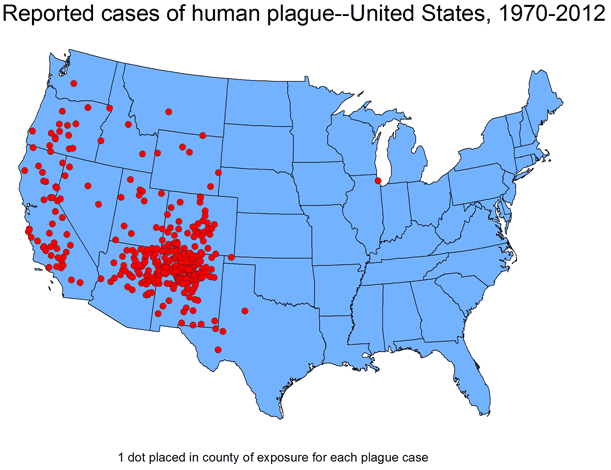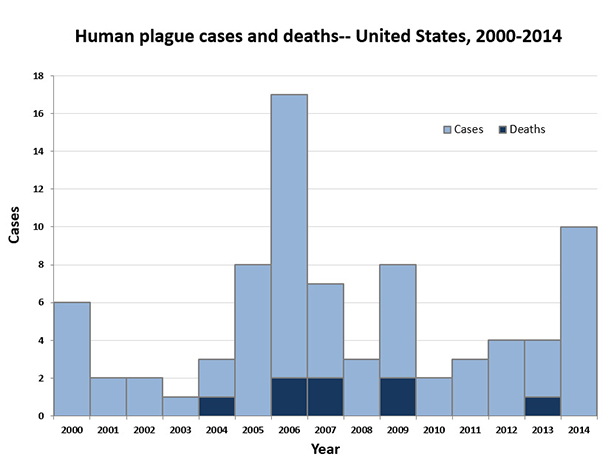How To Avoid Bubonic Plague
Since April 2015, eleven cases of plague have been recorded in the U.S., and three people have died leaving the CDC no other recourse but to issue a warning to alert doctors of potential cases that may arise.
There is a “Heightened Risk”
“It is unclear why the number of cases in 2015 is higher than usual,” the Centers for Disease Control and Prevention says. Many of the cases are occurring in rural and semi-rural areas in the western United States. The report lists two cases in Arizona, one in California, four in Colorado, one in Georgia, two in New Mexico and one in Oregon. The cases in California and Georgia have been linked to areas in or near Yosemite National Park in the southern Sierra Nevada. Dr. Natalie Kwit of the CDC emphasizes, “We don’t want people to panic but we do want them to be aware of the heightened risk.”
The CDC has recorded 1006 confirmed or probable human plague cases occurred in the United States between 1900 and 2012. Over 80% of United States plague cases have been the bubonic form. The plague is a rare and dangerous disease caused by the bacterium, Yersinia pestis and passed from humans by infected fleas and rodents typically in the wild. Many may remember how the Black Death killed around 30–60 percent of the population in Europe. These days, the bacteria is typically treated with antibiotics. With many antibiotic resistance strains of bacterias occurring, this begs the question. Will this plague rampantly spread like it once did?
Types of Plague to Look Out For


Leave a Reply